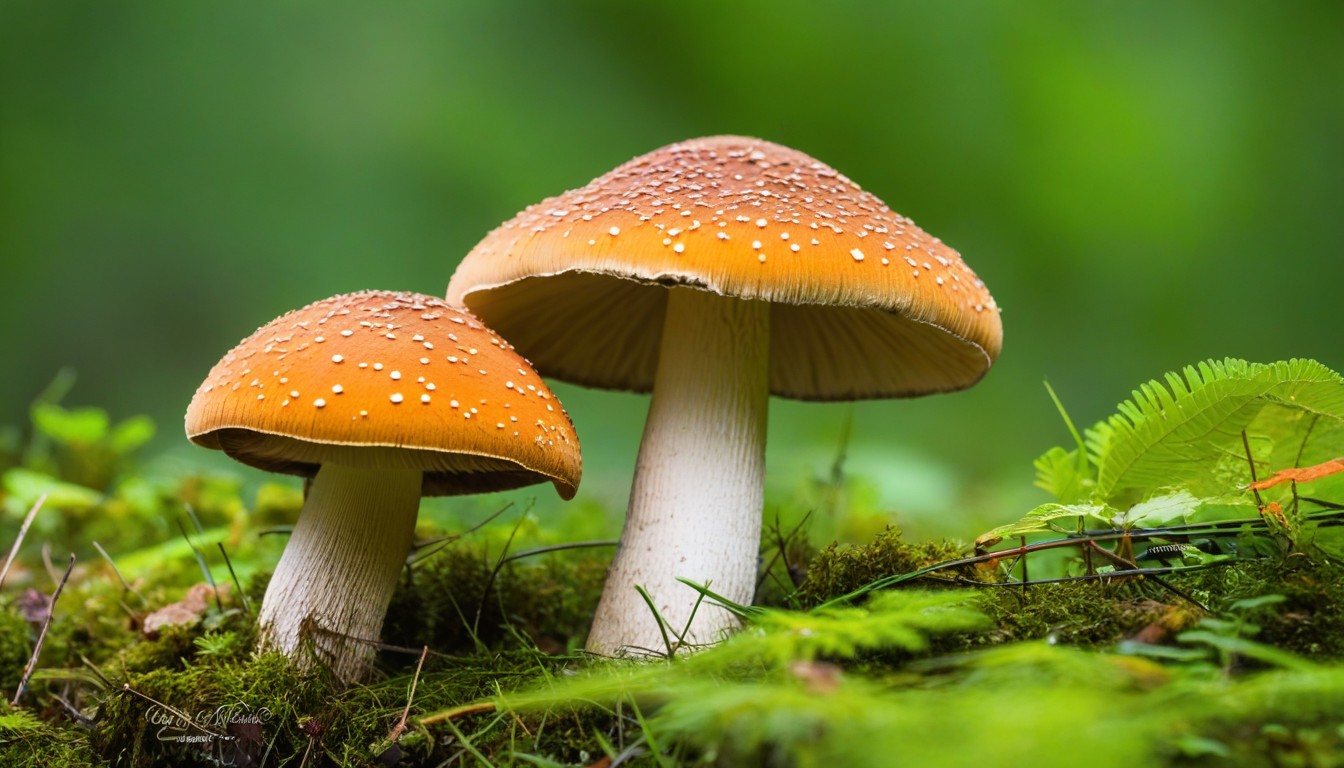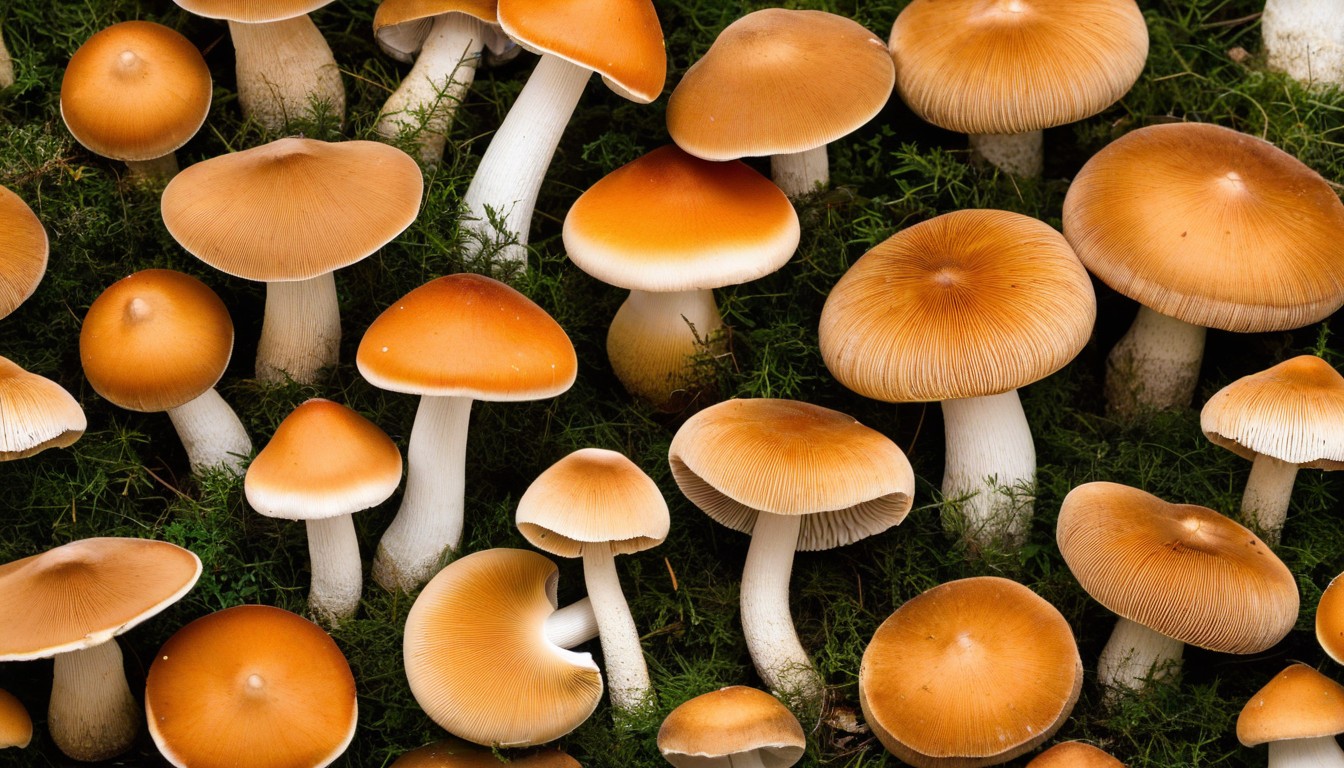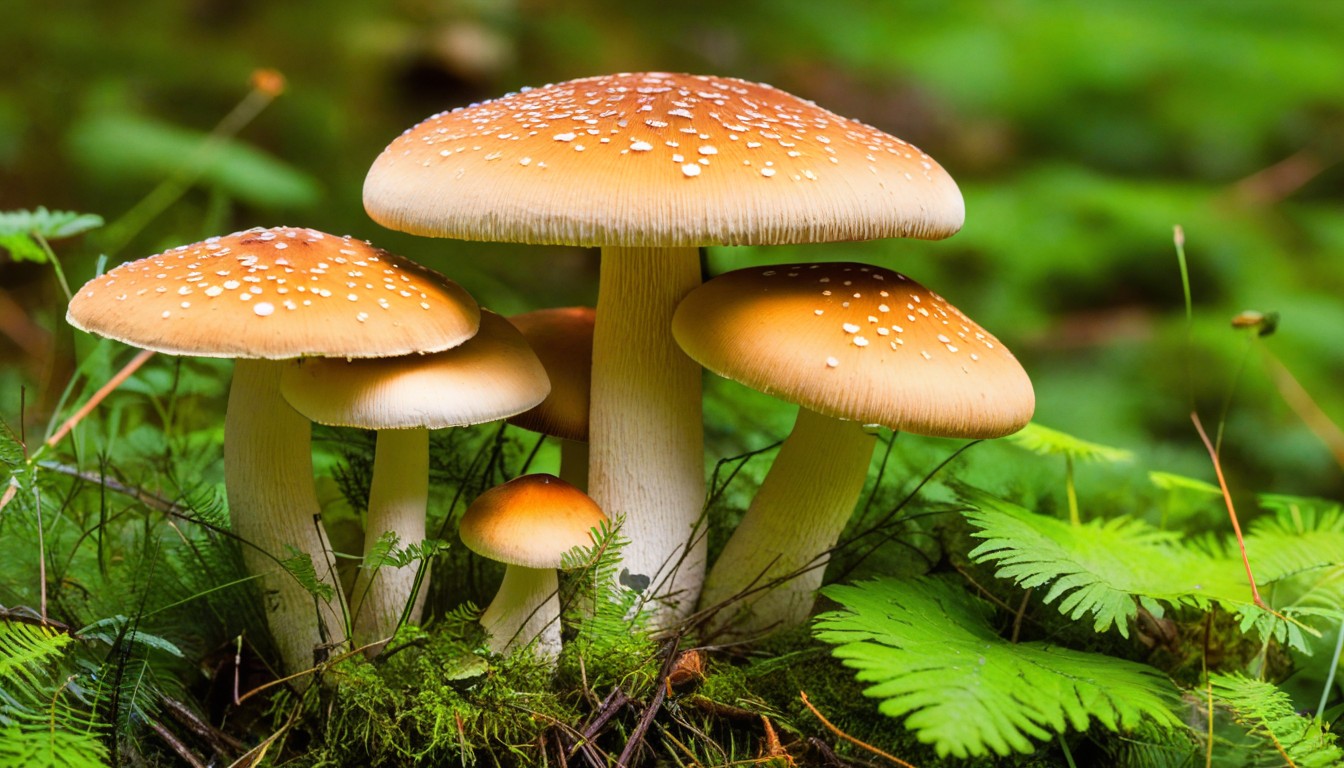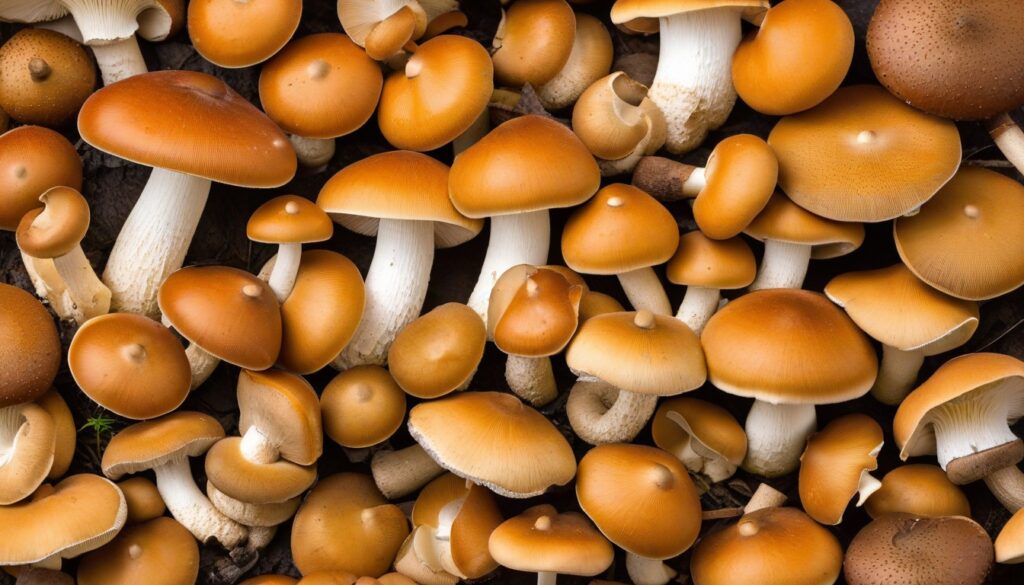North Carolina is a haven for wild mushrooms, with a stunning array of species thriving across its varied landscape. Experienced foragers and novices alike can discover abundant culinary delights in the state’s forests and meadows. This guide will walk you through researching and identifying edible wild mushrooms, offer tips for responsible foraging, and present delicious recipes to prepare these culinary treasures.
Key Takeaways
- North Carolina is home to an diverse collection of edible wild mushrooms.
- Identifying safe mushrooms is a crucial aspect of foraging, and this guide provides tips on how to do it.
- Culinary enthusiasts can explore how to cook edible mushrooms in a variety of ways.
- It’s important to adopt sustainable foraging practices to conserve mushrooms and their communities.
- Always prioritize safety when mushroom foraging by being cautious and following precautionary measures.
The Diversity of Mushrooms in North Carolina
North Carolina is a mushroom lover’s paradise, with vast forests and ecosystems that host a diverse range of edible fungi. From savory to sweet, mushrooms in this region possess unique flavors, textures, and nutritional values that make them a staple in local cuisine.
Here are some of the most commonly found mushrooms in North Carolina:
Mushrooms | Characteristics | Flavors |
|---|---|---|
Morel | Distinct cone-like form with a pitted exterior | Nutty, earthy, smoky |
Chanterelle | Trumpet-shaped with a wavy cap | Apricot-like, slightly peppery |
Honey Mushroom | Clustered mushrooms with a shiny cap and long stem | Meaty, slightly sweet |
Lion’s Mane | Rounded or elongated shape with spiky, white tendrils | Crab-like, delicate, seafood-like |
Hen-of-the-Woods | Clustered caps with a wrinkled, frilly appearance | Earthy, nutty, buttery |
Whether you’re looking for a tasty addition to your next meal or simply seeking outdoor adventure, North Carolina’s diverse mushrooms offer a unique and exciting experience for all.
Mushroom Foraging in North Carolina
Embark on an adventure and discover the art of mushroom foraging in North Carolina. With its diverse terrain and favorable climatic conditions, NC is a mushroom hunter’s paradise. From the lush forests of the Appalachian Mountains to the sandy coastal plains, every region offers a unique mix of wild edibles to explore.
Best Time and Places for Mushroom Foraging
The best time for mushroom foraging in North Carolina is between March and November when the temperature and moisture levels are favorable for mushroom growth. Some of the best places to forage for wild mushrooms include national and state parks, wildlife reserves, and other natural areas with diverse vegetation and suitable growing conditions.
Techniques for Successful Mushroom Foraging
Successful mushroom foraging involves proper equipment, techniques, and a keen eye for identification. Here are some tips to help you make the most of your foraging experience:
- Carry a mushroom guidebook or mushroom identification app to help you identify different species.
- Bend down and look under the leaves, bushes, and trees to spot hidden mushrooms.
- Avoid picking mushrooms that look old or have insect damage.
- Use a sharp knife or scissors to cut the mushroom stem at the base to avoid disrupting the soil and other fungi.
- Carry a basket or breathable bag to store the mushrooms and allow spores to spread.
The Thrill and Benefits of Mushroom Foraging
Foraging for wild mushrooms is not just an exciting outdoor activity but also a healthy and rewarding one. Eating fresh and locally sourced mushrooms provides a range of nutrients, including antioxidants, fiber, and vitamin D. Moreover, foraging helps you connect with nature, improve your mindfulness, and foster a sense of appreciation for the environment and its wonders.
“Foraging for mushrooms is a window into nature’s pantry.”
Identifying Edible Mushrooms in North Carolina

Foraging for wild mushrooms can be a fun and rewarding experience, but it’s crucial to identify edible mushrooms correctly to avoid any potential harm. The following key features and tips can help you distinguish edible mushrooms from poisonous ones in North Carolina:
Key Features of Edible Mushrooms
Feature | Description |
|---|---|
Cap | Look for a cap that is smooth, dry, and, in some cases, convex or funnel-shaped. |
Gills | Edible mushrooms have visible gills that are either attached or free from the stem. |
Stem | Examine the stem for color and texture, which can vary depending on the mushroom species. |
Common Edible Mushroom Species in North Carolina
- Morel
- Chanterelle
- Hen-of-the-Woods
- Shiitake
- Black trumpet
While these species are generally safe for consumption, it’s still important to correctly identify the specific species before consuming any wild mushrooms.
Tips for Safe Mushroom Foraging
- Consult reputable field guides and experts for identification assistance.
- Always be 100% certain of the identification before consuming a mushroom.
- Avoid consuming wild mushrooms with white gills, a red cap, or an almond-like scent, as these are common characteristics of poisonous mushrooms.
- Start with a small amount when trying a new species of mushroom for the first time.
By following these key features and safety tips, you can safely enjoy the unique flavors and textures of wild mushrooms in North Carolina.
Popular Edible Wild Mushrooms in North Carolina

North Carolina’s diverse habitats provide ideal conditions for various wild mushrooms to flourish. Here are some of the most popular and tasty mushrooms you can find during your foraging adventures.
Name | Description | Taste |
|---|---|---|
Morel | Recognizable by their hollow, cone-shaped caps and honeycomb texture, Morels typically grow in woodland areas in late spring. | Earthy, nutty, and meaty |
Chanterelle | Golden, trumpet-shaped caps and wavy edges characterize the Chanterelle, which often grow in mossy areas in late summer. | Delicate, fruity, and aromatic |
Hen-of-the-Woods | Also called Maitake, the Hen-of-the-Woods is a large, frilly mushroom that commonly grows at the base of oak trees in autumn. | Rich, buttery, and woodsy |
Chicken-of-the-Woods | This bright orange mushroom has a distinctive shelf-like structure and typically grows on the side of trees in late summer. | Tender, juicy, and slightly acidic |
These are just a few examples of the many wild mushrooms you can enjoy in North Carolina. Remember to always correctly identify all mushrooms before consuming them, as there are potential risks involved in foraging for wild mushrooms.
Tips for Safely Consuming Wild Mushrooms
After carefully harvesting your wild mushrooms, it’s essential to prepare, cook, and consume them safely to avoid any potential hazards. Here are some tips to ensure a delightful and risk-free culinary experience:
- Clean: Rinse your mushrooms thoroughly in fresh water to remove any dirt, debris, or insects.
- Cook: Always cook your mushrooms before consuming them. This eliminates any harmful bacteria or toxins that may be present.
- Start Small: If trying a new type of mushroom, start with a small amount to ensure that you do not have an adverse reaction.
- Mix With Other Foods: Avoid consuming large quantities of wild mushrooms at once. It is best to include them in a dish with other foods.
- Familiarize Yourself: It’s important to be familiar with the types of mushrooms that are safe to eat and those that are poisonous.
- Consult an Expert: If you are unsure about the identification of a mushroom, consult an expert before consuming it.
Remember, only consume mushrooms that you have positively identified as safe, and if you experience any adverse reactions after consuming wild mushrooms, seek medical attention immediately.
Fun Ways to Cook Edible Mushrooms from North Carolina

Cooking edible wild mushrooms from North Carolina is a delightful gastronomical experience that offers unique flavors and textures. Here are some fun and flavorful ways to enjoy these fungi treasures:
1. Mushroom Soup
Warm your soul with a nourishing mushroom soup that’s easy to make. Start by sautéing onions, garlic, and mushrooms in butter until they become tender. Add chicken or vegetable broth and simmer until the mushrooms are soft and fragrant. Puree the mixture until it’s smooth and creamy, then add some cream and seasonings to taste.
2. Mushroom Risotto
A classic Italian dish that lets the mushrooms shine through. Start by cooking Arborio rice with sautéed onions, garlic, and mushrooms until it becomes creamy and fluffy. Add some Parmesan cheese, butter, and parsley for added flavor.
3. Mushroom Stir-Fry
Add some Asian flair to your mushroom dishes with a tasty stir-fry. Sauté mushrooms, garlic, and ginger in oil until they’re browned and crispy. You can also add some soy sauce, sugar, and sesame oil for added umami flavor. Serve with rice or noodles for a satisfying meal.
4. Stuffed Mushrooms
In this dish, mushrooms become the star of the show as they’re stuffed with a savory filling. Start by scooping out the stems and gills of the mushrooms and fill them with a mixture of breadcrumbs, Parmesan cheese, garlic, and herbs. Bake them until the mushrooms are golden and the filling is crisp.
Mushroom Dish | Description |
|---|---|
Mushroom Soup | A nourishing and comforting soup that highlights the earthy flavor of mushrooms. |
Mushroom Risotto | An Italian classic dish that’s creamy and cheesy with the added earthiness of mushrooms. |
Mushroom Stir-Fry | An Asian-inspired dish that’s full of umami flavor and cooked to crispy perfection. |
A savory and delicious mushroom dish that’s crispy on the outside and moist on the inside. |
With these recipes, you can explore the diverse world of edible mushrooms in North Carolina and savor their unique flavors in exciting and creative ways.
Preserving Edible Wild Mushrooms for Future Use
One of the best things about foraging for wild mushrooms is that you can preserve them to use later. Here are some effective methods for preserving the bounty of edible wild mushrooms from North Carolina:
Drying
Drying is one of the easiest ways to preserve mushrooms. To dry mushrooms, clean them thoroughly and slice them into even pieces. Spread them in a single layer on a baking sheet or a mesh rack and place in a warm, dry place with good air circulation. Turn the mushrooms a few times to ensure even drying. Once they are completely dry, store the mushrooms in airtight containers away from sunlight and moisture.
Freezing
Freezing is another method of preserving mushrooms that can maintain their taste, texture, and nutrient value. To freeze mushrooms, clean and slice them and blanch them in boiling water or sauté them in butter first. Then spread the mushrooms on a tray and freeze them until they are firm. Once frozen, transfer them to airtight containers or freezer bags.
Pickling
Pickling is an excellent way to preserve mushrooms, especially if you want to add some tanginess to their natural flavor. To make the pickling brine, bring equal parts of water and vinegar to boil, and add sugar, salt, and your favorite pickling spices. Clean and slice your mushrooms, and place them in a sterilized jar. Pour the hot pickling brine over the mushrooms and seal the jar. The pickled mushrooms can be stored in a cool, dark place for up to six months.
By preserving your foraged mushrooms, you can enjoy their delectable taste and nutritional value long after the foraging season has ended.
Mushroom Safety Precautions

Mushroom foraging may sound like a fun activity, but it’s crucial to prioritize your safety when searching for edible mushrooms in the wild. Many poisonous mushroom species grow alongside edible ones, making proper identification and precautionary measures essential.
Essential Precautions
Follow these critical precautions to ensure your safety while foraging:
- Always carry a field guide or consult with an expert for proper identification.
- Avoid consuming any mushroom that you cannot identify with 100% certainty.
- Wear appropriate clothing, including long sleeves, pants, and gloves, to prevent exposure to poisonous plants and insects.
- Bring a sharp knife or scissors for clean cutting and a basket or mesh bag to carry your harvest.
- Avoid foraging in polluted areas, as mushrooms can absorb harmful substances from the environment.
Poisonous Mushroom Identification
It’s vital to learn how to differentiate between edible and poisonous mushrooms. Poisonous mushrooms often have distinct features that can help with identification:
Mushroom | Poisonous Characteristics |
|---|---|
Amanita phalloides | The cap is usually light green or yellow with white patches. The gills are typically white when young and become olive or yellowish as they mature, turning black when they start to decompose. |
Galerina marginata | The cap is conical, brownish, and sometimes has a small bump on top. The stem is thin, brownish, and does not have a ring. The gills are brown and spaced very closely together. |
Conocybe filaris | The cap is usually brownish and conical, with a knob at the top. The stem is thin and smooth, and the gills are light-colored. The mushroom has a distinctive fishy odor. |
If Poisoning Occurs
If you suspect mushroom poisoning, seek medical help immediately. Try to bring a sample of the mushroom ingested, along with any other pertinent information, to help with diagnosis and treatment.
Final Thoughts
When foraging for wild mushrooms, always put your safety first. Proper identification and precautionary measures can ensure a delightful and risk-free culinary experience.
Sustainable Foraging Practices
Foraging wild mushrooms is a rewarding experience, but it’s crucial to practice sustainability to ensure their preservation for future generations. Here are some principles to follow when foraging in North Carolina:
1. Respect the natural environment
It’s important to be mindful of the impact you have on the natural ecosystem when foraging for wild mushrooms. Avoid damaging vegetation or disturbing wildlife habitats, and stay on designated trails to minimize your footprint.
2. Harvest responsibly
When foraging, take only what you need and avoid over-harvesting or removing entire species from their habitats. Leave some mushrooms behind to ensure their growth and propagation in the future.
3. Educate yourself
Before going on a foraging trip, educate yourself about the different species of edible and poisonous mushrooms in North Carolina. Learning to properly identify mushrooms before harvesting them can make a significant difference in preserving the wild populations.
4. Practice safety
Foraging for wild mushrooms has inherent risks, including the potential for poisoning from consuming toxic species or stumbling upon dangerous wildlife. Always bring a first aid kit and a charged cell phone in case of emergencies. It’s also important to let someone know where you’re going and when you plan to return.
5. Share the love
Foraging can be a fun and fulfilling activity to share with others. Consider joining foraging groups or classes to meet like-minded individuals and share your knowledge. Engaging the community in sustainable foraging practices helps spread awareness and ensure the preservation of wild mushrooms in North Carolina and beyond.
Conclusion
Foraging for edible wild mushrooms in North Carolina is a thrilling and fulfilling experience. From the woods to your plate, these fungi treasures offer a diverse range of flavors and culinary possibilities.
Remember to prioritize safety by accurately identifying mushrooms, following guidelines, and only consuming mushrooms that you are sure are safe to eat.
Sustainable foraging practices are also key to preserving the natural habitats and ensuring the longevity of these delicate ecosystems. Keep in mind the importance of minimizing your impact on the environment and respecting the laws and regulations.
Now that you have learned the fundamentals of edible wild mushrooms in North Carolina, it’s time to put your knowledge into practice. Grab your basket, head to the woods, and embark on your own foraging adventure. Happy hunting!
FAQ
What are edible wild mushrooms?
Edible wild mushrooms are fungi that can be safely consumed by humans, offering unique flavors and textures. They are typically harvested from their natural habitats, such as forests, and can be used in a variety of culinary creations.
Are there any poisonous mushrooms in North Carolina?
Yes, North Carolina is home to several poisonous mushrooms. It is important to accurately identify edible mushrooms and be cautious when foraging. If you are unsure, it is best to consult with an expert or avoid consuming wild mushrooms altogether.
What are the best locations for mushroom foraging in North Carolina?
North Carolina offers diverse habitats for mushroom foraging, including forests, parks, and nature reserves. Some popular locations for mushroom foraging include the Great Smoky Mountains National Park, Pisgah National Forest, and Uwharrie National Forest.
When is the best time to go mushroom foraging in North Carolina?
The optimal time for mushroom foraging in North Carolina is typically in the spring and fall, when moisture and temperature conditions are favorable for mushroom growth. However, depending on the species, mushrooms can be found throughout the year.
How can I identify edible mushrooms from potentially poisonous ones?
Accurately identifying edible mushrooms requires knowledge of their key features, such as cap shape, gill patterns, stem characteristics, and spore color. It is recommended to refer to reliable field guides, attend mushroom identification workshops, or seek guidance from experienced foragers.
What are some popular edible wild mushrooms found in North Carolina?
North Carolina is known for its abundance of delicious edible wild mushrooms, including Morels, Chanterelles, Hen-of-the-Woods, Chicken-of-the-Woods, and Oyster mushrooms. These mushrooms are prized for their unique flavors and culinary versatility.
Are there any safety precautions I should take when consuming wild mushrooms?
Absolutely! Always be cautious and follow safety guidelines when consuming wild mushrooms. Some key precautions include accurately identifying mushrooms, cooking them thoroughly, starting with small quantities to test for allergies or sensitivities, and never consuming mushrooms that you are unsure about.
What are some fun ways to cook edible mushrooms from North Carolina?
There are countless creative and delicious ways to cook edible mushrooms from North Carolina. You can use them in soups, stews, sauces, stir-fries, risottos, pasta dishes, or simply sauté them with garlic and herbs. The possibilities are endless!
How can I preserve edible wild mushrooms for future use?
To extend the shelf life of edible wild mushrooms, you can preserve them through various methods such as drying, freezing, or pickling. Each method has its own requirements and benefits, so it’s important to choose the one that suits your needs and preferences.
What precautions should I take while foraging for mushrooms?
When foraging for mushrooms, it is essential to prioritize your safety. Some precautions include wearing appropriate attire, using a mushroom knife or brush for harvesting, avoiding areas with potential contamination, and consulting experts or experienced foragers if you are uncertain about a mushroom’s identification.
How can I practice sustainable foraging while hunting for edible mushrooms?
Sustainable foraging practices are crucial to protect the environment and ensure the future availability of wild mushrooms. Some principles of sustainable foraging include harvesting in moderation, respecting the natural habitats, avoiding damage to mycelium and other organisms, and leaving no trace of your presence in the foraging area.

